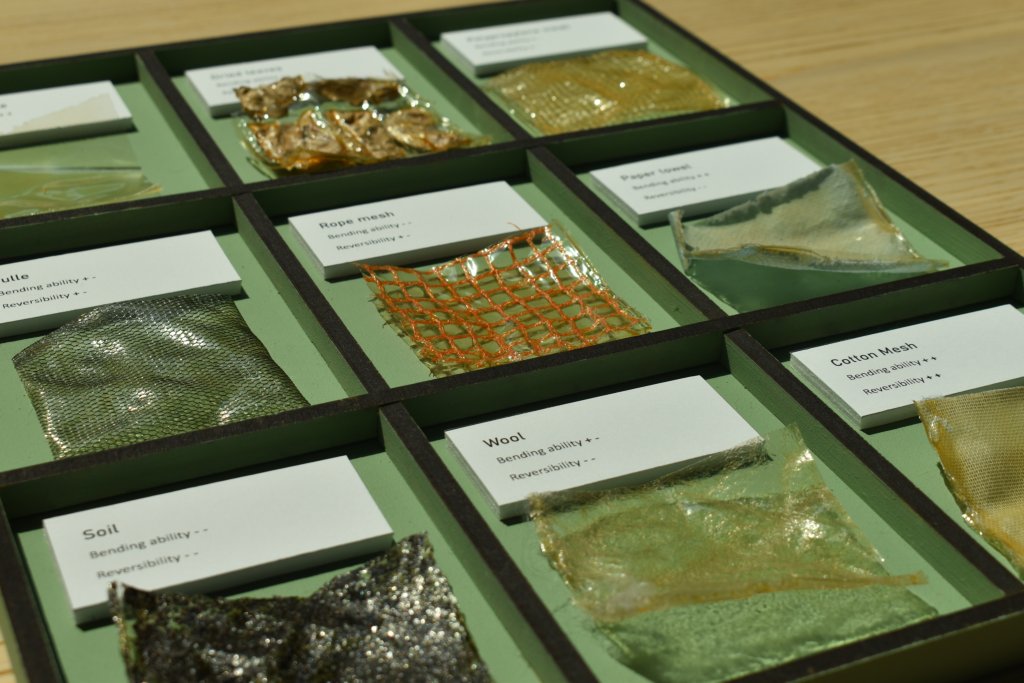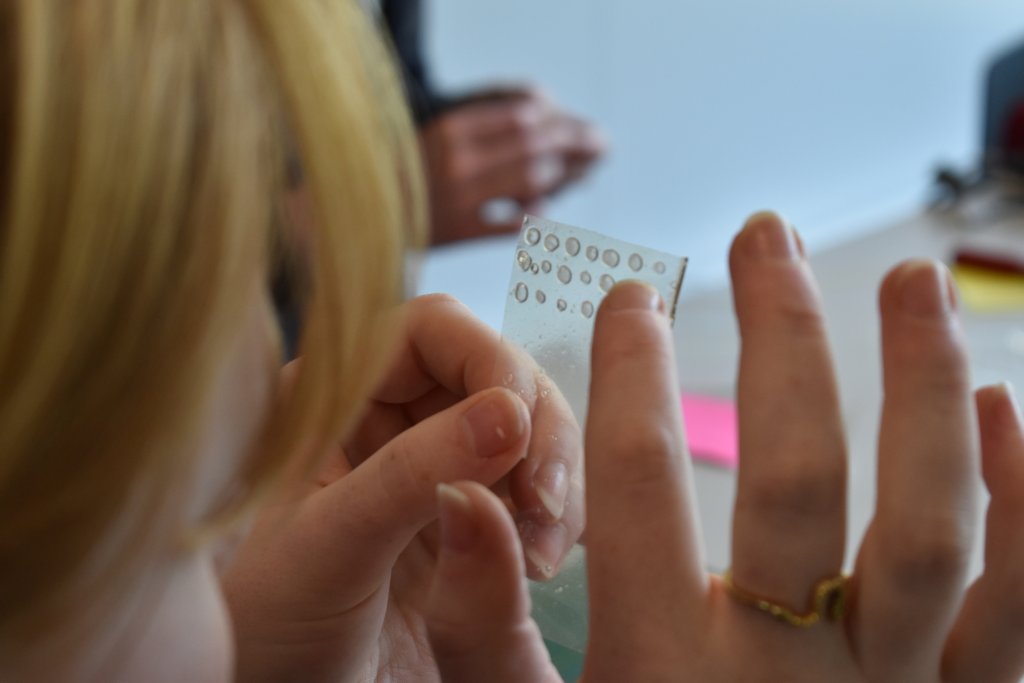Karijn Den Teuling
This project showcases a diverse array of samples created to achieve shape-changing actuators which can be used to achieve expressive and embodied interactions. Drawing inspiration from nature and different fields of engineering, I explore the potential of passive actuation mechanisms to achieve shape change without relying on energy-intensive processes. I make use of the intrinsic response of hygroscopic materials which undergo shape changes in response to fluctuations in humidity.
Though using circular materials for interaction design is complex, I show that we can learn from the field of soft robotics and material science to develop regenerative materials used as actuators, enabling the evolution of robotics toward a sustainable future in interaction design. As an industrial designer, my goal is to create regenerative interactive materials while providing rich and embodied user-experiences. How can we design regenerative interactive actuators?
When appliances such as consumer electronics reach their end-of-life, they are often discarded because the material compositions and designs are not easily recyclable. To combat this environmental threat, creating easy-to-recycle devices with renewable materials and biodegradable or temporary systems, can establish a closed technology life cycle.
There is a growing interest In the field of interaction design in actuation beyond screens. However, the use of tangible interfaces has also been critiqued for not being sustainable. Shape-changing and haptic interfaces, for example, make frequent use of mechanical actuators that consume extensive amounts of energy as well as using non-regenerative materials.
Chitosan is the second most abundant biomaterial on Earth. I introduce it as a biodegradable and humidity-responsive actuator, exploring its utilization to support more sustainable approaches to haptic and shape-changing interaction. The design process started with exploring the fabrication process of creating chitosan films. Subsequently, I adopted an exploratory approach to determine the means by which chitosan could be programmed to exhibit reversibility, allowing the material to be bent and straightened by absorbing and adsorbing environmental water.
I was able to characterize the material, which included characterizing response time and bending curve in response to changes in relative humidity. In addition, generative expert sessions were organized with experts from different fields, such as Mechanical Engineering, Electrical Engineering, Industrial Design and Chemical Engineering.
The project contributes to the field of Human-Computer Interaction in three ways. First, I propose a reversible and biodegradable actuator. Second, I present various temporalities for shapes and configurations using this material. Lastly, I introduce a range of potential applications derived from expert sessions and my own investigations.


